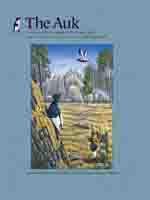A guiding premise for compiler and editor Kevin Winker in collecting these 20 narratives is that “when studying biological diversity and its distribution there is no better way to begin than to read the works of our predecessors.” Certainly that would hold true for scientific literature, but Winker also wanted to convey a sense of place and capture some of the gritty, fearsome, and humorous experiences of biological field work that were often only transmitted via oral storytelling in camp or back on campus. Most of the accounts come from graduate students and faculty of North American academic institutions between the 1930s during “the heyday of whole-organism natural history” to the 1990s when Latin American students worked shoulder-to-shoulder with graduate students from the United States. Most of the narratives took place, at least in part, in Mexico, but all of the countries in Central America were visited by at least one of the authors. Through their support and encouragement, George Lowery at Louisiana State University and George M. Sutton were “godfathers” of several of the expeditions. One of Sutton's students, Dwain Warner, former professor and curator of birds at the University of Minnesota and Cornell University alum, authored one of the accounts and featured prominently as the major professor of several of the account authors, including Winker. (A photograph taken at Rancho Rinconada in Tamaulipas, Mexico, that includes Sutton and Warner in Sutton's classic At a Bend in a Mexican River [Paul S. Eriksson, New York] documents that intellectual lineage.)
Winker assembled these first-hand observations in order to “grasp the often phenomenal changes that have since occurred, not only among the countries, environments, and peoples concerned but also in the natural sciences.” The narratives range in length from a few to over 40 pages and vary in style from almost unadulterated field notes dominated by names of people, places, and lists of birds to extended descriptions and reminiscences complete with dialogue. Miguel Alvarez del Toro, writing shortly before his death, recounted a 20-day zoological expedition to El Triunfo, Chiapas, Mexico. In his search for the Horned Guan (Oreophasis derbianus), he vividly described dangers (disease, venomous snakes, Jaguars [Panthera onca]), beauty (“gardens of ephiphytes”), and an exhilarating observation of a Harpy Eagle (Harpia harpyja) attacking a small deer. Del Toro lamented the loss of Mexico's natural treasures as a short-sighted trade of the flight of the quetzal and voice of a tinamou for “the hysterical barking of starving dogs or the satisfied grunts of pigs.” This is a great moment in the life of an outstanding naturalist (to borrow from John Terres).
Most of the earliest expeditions that were the sources of the collected narratives were based on collecting birds: Robert F. Anderle (1950s and 1960s; Mexico, Guatemala, and Costa Rica), Walter W. Dalquest (1940s, Mexico), Robert W. Dickerman (1950s, Mexico; and 1968, Panama, Honduras, and Guatemala), Stephen W. Eaton (1970, Mexico to Panama), Ernest P. Edwards (1940s, Mexico), John T. Emlen, Jr. (1930, Honduras; 1960s and 1970s, Mexico), Joe T. Marshall, Jr. (1942, EI Salvador), Paul S. Martin (1948, Mexico), Charles G. Sibley (intermittent trips from 1939 to 1950, Mexico), and Dwain W. Warner (intermittent trips from 1949 to 1973, Mexico). Paul S. Martin in his perceptive account, “Green Mansions of Tamaulipas,” noted that although the days of such intensive bird collecting were long past, “our research efforts and publications helped to support Mexican conservationists in their establishment in 1985 of the EI Cielo Biosphere Reserve.” This reflects the change in the natural sciences from collecting to hypothesis testing that is captured in the narratives by the “third generation” of ornithologists (John M. Bates, Paul D. Haemig, Joyce Heck, John H. Rappole, and Kevin Winker) during their ornithological research.
Sandwiched among these accounts of primarily scientific research are reminiscences of recording bird songs by Lula C. Coffey; memories of Don Owen-Lewis, a British liaison officer to a group of Mayan Indians in British Honduras that became Belize; and Walter A. Thurber, who went to EI Salvador in the mid-1960s to foster science education for the U.S. State Department. In his narrative he wrote about his scientific studies and observations as well as the educational programs that he developed using his birdsong recordings and photographs to reestablish ties between Salvadorans and their natural heritage.
This book need not be read from cover to cover. Instead, it is a sampler that captures some of the history of scientific collecting, natural-history studies, and ornithological research in Middle America. Winker has done a valuable service by assembling the writings that otherwise might have remained as the aging field notes of a scattered assortment of biologists. Those who have a personal connection to the places and people mentioned will enjoy this collection of narratives, but it is also a worthwhile read for anyone interested in the scientific foundation of conservation in a biologically diverse corner of the world.





